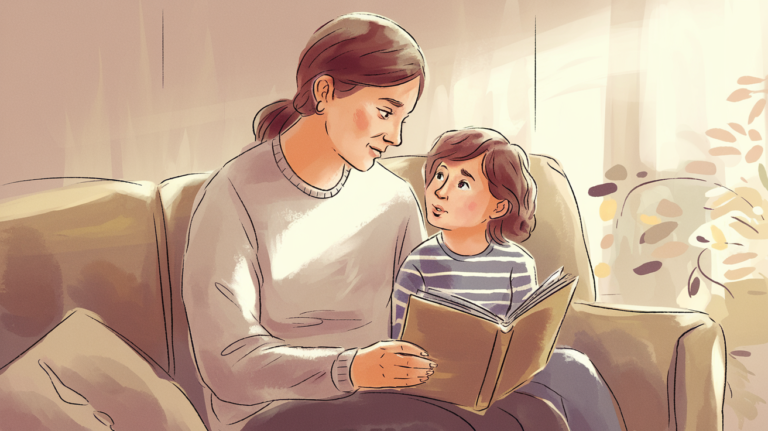Having a child with autism often brings unique challenges and victories. For many families, one significant hurdle is helping their child manage anxiety. Anxiety in autistic children can manifest physically—through actions like destroying clothes, repetitive movements, or meltdowns. These behaviors may become more pronounced when the child cannot effectively express their emotions.

Dr. Jeffrey Wood from UCLA emphasizes strategies to manage autism-related anxiety, focusing on therapies like Cognitive Behavioral Therapy (CBT). This method helps children identify and reframe their fears in less threatening ways. Paired with exposure therapy—where children gradually face their fears in controlled steps—CBT has been shown to reduce anxiety effectively. Research supports CBT as a top intervention for anxiety in autistic children, providing hope for parents and caregivers alike.
Medications can also play a role in easing anxiety when therapy and other interventions need additional support. These medications, prescribed by healthcare professionals, may include options like selective serotonin reuptake inhibitors (SSRIs) or anti-anxiety medications, which can help balance chemical signals in the brain. It is essential to tailor medication choices to each child’s unique needs and monitor for side effects closely.
For caregivers seeking more information, tools like the ATN/AIR-P Medication Decision Toolkit provide valuable guidance. This resource helps families and clinicians work together to evaluate potential benefits and risks, ensuring informed decisions.
Example: A child experiencing severe anxiety around school transitions may benefit from a low-dose medication alongside behavioral strategies. Regular check-ins with the prescribing doctor help fine-tune the dosage and ensure the treatment plan remains effective and safe. While managing anxiety takes time and patience, the right strategies and support make it achievable.
While managing anxiety takes time and patience, the right strategies and support make it achievable.
Key Takeaways
- Anxiety in autistic children often shows as physical behaviors due to communication challenges.
- Cognitive Behavioral Therapy (CBT) helps identify and logically challenge fears.
- Exposure therapy allows children to face anxieties in manageable steps.
- Complementary medications, guided by professional advice, can provide additional relief.
- A personalized, multi-strategy approach is crucial to success.
The Connection Between Autism and Anxiety
Anxiety is closely linked to autism. Research reveals that autistic children often experience heightened anxiety, with behaviors such as excessive shyness, avoiding social situations, or repetitive actions signaling their inner stress.
Understanding anxiety as a reaction to internal and external stressors is key. When caregivers grasp this connection, they can employ tailored strategies to help their child navigate these challenges.
Common Anxiety Symptoms in Autistic Children
Anxiety in autistic children can appear in diverse ways. Recognizing these signs early is essential for effective intervention:
Behavioral Signs:
- Repetitive actions: Hand-flapping, rocking, or repeating phrases.
- Destructive behaviors: Hitting, biting, or tearing clothes.
- Meltdowns: Intense emotional outbursts triggered by overwhelming situations.
Physical Signs:
- Increased heart rate or sweating: Indicators of heightened stress.
- Stomachaches or headaches: Physical manifestations of anxiety.
- Withdrawal: Avoidance of social interactions or preferred isolation.
Scenario: During a family gathering, a child starts rocking back and forth and covering their ears. Recognizing this as anxiety, the caregiver takes them to a quieter space, helping them regain calm.
Common Triggers of Anxiety in Daily Life
Identifying and addressing anxiety triggers can help create a supportive environment for autistic children.
1. Changes in Routine:
- Trigger: A disrupted schedule, like a different route to school.
- Action: Prepare visual schedules and use countdowns for transitions.
- Scenario: Before a doctor’s appointment, show a visual timeline to help the child anticipate the change.
2. Sensory Overload:
- Trigger: Loud noises, bright lights, or crowded places.
- Action: Create sensory-friendly spaces with noise-canceling headphones, dimmed lighting, or quiet areas.
- Scenario: During a busy supermarket visit, noise-canceling headphones and short breaks in quieter aisles help reduce stress.
3. Social Situations:
- Trigger: Unstructured settings like playgrounds or birthday parties.
- Action: Role-play social scenarios and use social stories for preparation.
- Scenario: Before a playdate, practice greetings and sharing toys to build confidence.
Effective Strategies for Managing Anxiety
Helping autistic children manage anxiety involves implementing thoughtful strategies. Below are evidence-based techniques:
Cognitive Behavioral Therapy (CBT):
CBT teaches children to face and reframe their fears logically, equipping them with lifelong coping mechanisms. This method involves understanding their fears and breaking them into manageable steps that are less intimidating. For instance, if a child fears going to school, CBT might start by discussing what makes them anxious, then practicing short school visits during quiet hours.
Example: A child afraid of dogs might first learn about dogs through books, followed by observing a calm dog from a distance. Gradually, they might progress to being in the same room as a dog, eventually petting one when they feel ready. This step-by-step process helps the child feel in control and reduces fear.
In daily life, CBT can address situations like the fear of trying new foods. A caregiver might start by showing pictures of the food, followed by having the food on the table, and eventually encouraging the child to take a small bite when they feel comfortable. These logical, incremental steps make fears more manageable and build confidence.
Exposure Therapy:
This method complements CBT by gradually exposing children to anxiety-provoking stimuli in safe settings, helping them build resilience over time. The process involves controlled and incremental exposure, ensuring the child feels safe and supported at each step.
Example: A child who feels anxious about public speaking might start by practicing in front of a trusted family member. Over time, they could progress to speaking in front of a small group of friends and eventually in a classroom setting. Each step builds their confidence and reduces the fear associated with the activity.
In daily life, exposure therapy can help with common fears, such as visiting crowded places. For instance, if a child is nervous about going to a shopping mall, the process might begin with a brief visit to the parking lot, followed by a short trip inside during off-peak hours, and later progressing to longer visits during busier times. This gradual exposure helps the child adjust to the environment without feeling overwhelmed.
For children who struggle with social situations, exposure therapy might involve starting with one-on-one playdates before moving to small group activities like birthday parties. Caregivers can prepare the child by discussing what to expect, role-playing scenarios, and celebrating small successes along the way.
Practicing Calming Techniques:
Daily calming practices can significantly lower anxiety. Examples include:
- Deep breathing exercises
- Progressive muscle relaxation
- Mindfulness activities
Creating a Sensory Toolbox:
A sensory toolbox provides immediate comfort during anxiety spikes. Include:
- Fidget toys for stress relief
- Noise-canceling headphones for auditory overload
- Weighted blankets for calming pressure
- Sensory chewies for oral sensory input
- Calm-down jars for visual relaxation

Utilizing Different Therapies for Autism and Anxiety
Combining therapies creates a comprehensive approach to managing anxiety.
Speech Therapy:
Helps children articulate their feelings, reducing frustration and anxiety.
Occupational Therapy:
Supports sensory integration and coping skills for everyday challenges.
Physical Therapy:
Improves motor skills and reduces physical tension associated with anxiety.
| Therapy Type | Focus Area | Key Techniques | Benefits |
|---|---|---|---|
| Speech Therapy | Communication | Verbal exercises, visual aids | Improves expression |
| Occupational Therapy | Sensory Integration | Sensory diets, regulation tools | Manages sensory overload |
| Physical Therapy | Motor Skills | Balance training, exercises | Reduces physical tension |

Identifying Anxiety Triggers
Parents and caregivers can uncover anxiety triggers using:
1. Behavioral Logging:
Document when and where anxiety occurs, noting patterns.
2. Environmental Analysis:
Evaluate surroundings to identify stress points.
3. Professional Input:
Consult teachers and therapists for expert insights.
Scenario: Recording a child’s reactions during a family outing reveals they become anxious when unfamiliar people join. Gradual introductions to new faces, starting with brief, low-pressure interactions, can help them feel more at ease. Over time, increasing the duration and complexity of these introductions can build confidence and reduce anxiety.
Conclusion
Managing anxiety in autistic children involves a multi-pronged approach. Cognitive Behavioral Therapy, exposure therapy, calming techniques, and specialized tools can make a substantial difference. Complementary therapies like speech, occupational, and physical therapy further support holistic development.
Personalized care plans, informed by expert insights and research, empower children to thrive. With the right strategies, parents and caregivers can foster resilience and ensure their child’s well-being.
FAQ
What is the connection between autism and anxiety?
Autistic children often experience anxiety due to communication difficulties, sensory overload, or struggles with social interactions.
What are common anxiety symptoms in autistic children?
Signs include repetitive behaviors, meltdowns, increased heart rate, and withdrawal from social settings.
How can I identify triggers of anxiety?
Keep a journal, analyze environments, and consult professionals to pinpoint stressors.
What are effective calming techniques?
Deep breathing, mindfulness, and sensory tools like weighted blankets and fidget toys can help reduce anxiety.
How do therapies help manage autism and anxiety?
Speech therapy improves communication, occupational therapy supports sensory processing, and physical therapy reduces physical tension.


